Welcome to
Barerarerungar
12th April - 28th July 2024
OPENArchival Platform
Photography
curated by Valentina Gensini and Renata Summo O'Connell
12th apr – 28th jul 2024
curated by Valentina Gensini and Renata Summo O’Connell
Maree Clarke, a descendant of the Mutti Mutti, Yorta Yorta, Wamba Wamba and Boon Wurrung, is an Australian indigenous artist who, celebrating the continuity with her culture and history, opens up innovative artistic spaces. Maree’s presence in Florence with her site-specific artistic project created during her residency at MAD is of great significance, as she engages with the city through her multiple installations in the ancient prisons and initiates a conversation with European colonial history through her installation at the Anthropological Museum.
Maree’s highly contemporary multimedia work finds its innovative visual language in the recovery of lost practices of Indigenous Australians from the southeast. The artist’s production in Florence began along the Arno, creating necklaces of river reeds, a symbol of safe passage
12th apr – 28th jul 2024
curated by Valentina Gensini and Renata Summo O’Connell
Maree Clarke, a descendant of the Mutti Mutti, Yorta Yorta, Wamba Wamba and Boon Wurrung, is an Australian indigenous artist who, celebrating the continuity with her culture and history, opens up innovative artistic spaces. Maree’s presence in Florence with her site-specific artistic project created during her residency at MAD is of great significance, as she engages with the city through her multiple installations in the ancient prisons and initiates a conversation with European colonial history through her installation at the Anthropological Museum.
Maree’s highly contemporary multimedia work finds its innovative visual language in the recovery of lost practices of Indigenous Australians from the southeast. The artist’s production in Florence began along the Arno, creating necklaces of river reeds, a symbol of safe passage and friendship in the tradition of Australian indigenous. These necklaces, traditionally worn during tribal journeys, now have immense significance in the exhibition Welcome to Barerarerungar in Florence. This ancestral practice, in which the reeds are dyed and intertwined with feathers, connects the Arno River and its city to a distant culture in a very special way, spanning ages and hemispheres, in a generous act of welcome.
The exhibition begins in the courtyard of MAD in Piazza delle Murate, encompassing all the walls of the surrounding buildings, and inside the historic cells: projections, large installations, photographs, and more, aim to honor painful themes such as lost land, languages, and cultural practices, while simultaneously opening her rich world to us, in a kind and open invitation to learn, understand, and respect the traditions of the oldest culture in the world.
For more information
+39 055 2476873
info.mad@musefirenze.it
January 30th, 2024 - March 31st, 2024
Nicolò Degiorgis is an artist and publisher based between Bolzano and Bozen, Italy. His works comprise books, installations, collages, photographs, videos and maps that chart conceptually the territory and the communities where he lives. He teaches visual expression at the Penitential Institute of Bolzano-Bozen and works as artistic director at Rorhof, a publishing house operating in form of a social cooperative.
He graduated from the Department of Asian and North African Studies at Ca’ Foscari University in Venice (2008). He was the recipient of a Fabrica scholarship, Benetton’s research and communication center in Treviso (2008-09) and a research fellowship from the Faculty of Political and Social Science at the University of Trieste (2009-10).
He was guest-curator 2017 at Museion, Bolzano-Bozen, and publisher in residence at Rijksakademie van Beeldende Kunste in Amsterdam (2018).
His works are held in numerous private and public collections and have been exhibited international
Nicolò Degiorgis is an artist and publisher based between Bolzano and Bozen, Italy. His works comprise books, installations, collages, photographs, videos and maps that chart conceptually the territory and the communities where he lives. He teaches visual expression at the Penitential Institute of Bolzano-Bozen and works as artistic director at Rorhof, a publishing house operating in form of a social cooperative.
He graduated from the Department of Asian and North African Studies at Ca’ Foscari University in Venice (2008). He was the recipient of a Fabrica scholarship, Benetton’s research and communication center in Treviso (2008-09) and a research fellowship from the Faculty of Political and Social Science at the University of Trieste (2009-10).
He was guest-curator 2017 at Museion, Bolzano-Bozen, and publisher in residence at Rijksakademie van Beeldende Kunste in Amsterdam (2018).
His works are held in numerous private and public collections and have been exhibited internationally including at Maxxi and Macro in Rome, Pinakothek der Moderne in Munich, Fondazione Sandretto Re Rebaudengo in Turin, Mambo in Bologna and Museion in Bolzano/Bozen.

co-founder and director Black History Month Florence
Justin Randolph Thompson is a new media artist, cultural facilitator and educator born in Peekskill, NY in ’79. Living between Italy and the US since 1999, Thompson is Co-Founder and Director of Black History Month Florence, a multi-faceted exploration of African and African Diasporic cultures in the context of Italy founded in 2016.
Thompson is a recipient of a Louise Comfort Tiffany Award, a Franklin Furnace Fund Award, a Visual Artist Grant from the Fundacion Marcelino Botin, two Foundation for Contemporary Arts Emergency Grants, A Jerome Fellowship from Franconia Sculpture Park and an Emerging Artist Fellowship from Socrates Sculpture Park. His life and work seek to deepen the discussions around socio-cultural stratification and hierarchical organization by employing fleeting temporary communities as monuments and fostering projects that connect academic discourse social activism and DIY networking strategies in annual and biennial gathering, sharing and gestures of collectivity.
Justin Randolph Thompson is a new media artist, cultural facilitator and educator born in Peekskill, NY in ’79. Living between Italy and the US since 1999, Thompson is Co-Founder and Director of Black History Month Florence, a multi-faceted exploration of African and African Diasporic cultures in the context of Italy founded in 2016.
Thompson is a recipient of a Louise Comfort Tiffany Award, a Franklin Furnace Fund Award, a Visual Artist Grant from the Fundacion Marcelino Botin, two Foundation for Contemporary Arts Emergency Grants, A Jerome Fellowship from Franconia Sculpture Park and an Emerging Artist Fellowship from Socrates Sculpture Park. His life and work seek to deepen the discussions around socio-cultural stratification and hierarchical organization by employing fleeting temporary communities as monuments and fostering projects that connect academic discourse social activism and DIY networking strategies in annual and biennial gathering, sharing and gestures of collectivity.
Janine Gaelle Dieudji about Adji Dieye
Available in:
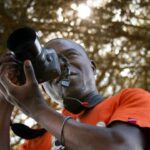
Photographer
Mohamed Keita was born in Côte d’Ivoire in 1993. At the age of 14, he left his country in the middle of a civil war to travel alone between Guinea, Mali, Algeria and Libya, where he embarked to cross the Mediterranean. After landing in Malta, he managed to reach Italy in 2010. When he arrived in Rome, at the age of 17, he lived on the street for a few months and began to attend the Civico Zero day care centre for minors in Savethechildren, where he was given his first camera.
He lives and works in Rome where he teaches photography at the Civico Zero center. In 2017 he opened a workshop for street children in Mali.
Main exhibitions and awards:
“Piedi, scarpe, bagagli”, Camera dei Deputati, Roma, 2012
“Ritratti”, XII Festival Internazionale di Roma, MACRO, Roma, 2014
Premio ‘young/old photographer’ PHC Capalbio fotografia, 2015
“Desperate crossing” mostra di Mohamed Keita e Paolo Pellegrin, Istituto italiano di cultura di New York, 2016
“Par l’errance”, Centro d�
Mohamed Keita was born in Côte d’Ivoire in 1993. At the age of 14, he left his country in the middle of a civil war to travel alone between Guinea, Mali, Algeria and Libya, where he embarked to cross the Mediterranean. After landing in Malta, he managed to reach Italy in 2010. When he arrived in Rome, at the age of 17, he lived on the street for a few months and began to attend the Civico Zero day care centre for minors in Savethechildren, where he was given his first camera.
He lives and works in Rome where he teaches photography at the Civico Zero center. In 2017 he opened a workshop for street children in Mali.
Main exhibitions and awards:
“Piedi, scarpe, bagagli”, Camera dei Deputati, Roma, 2012
“Ritratti”, XII Festival Internazionale di Roma, MACRO, Roma, 2014
Premio ‘young/old photographer’ PHC Capalbio fotografia, 2015
“Desperate crossing” mostra di Mohamed Keita e Paolo Pellegrin, Istituto italiano di cultura di New York, 2016
“Par l’errance”, Centro d’arte contemporanea Luigi Pecci, Prato, 2018
“Rothko in Lampedusa”, mostra collettiva organizzata da UNHCR, Fondazione Ugo e Olga Levi, Venezia, 2019
This content is avaiable only in this archive.
Photography exhibition by Mohamed Keita
Mohamed Keita’s residence at MAD Murate Art District focusing on images of institutional integration and volunteering in the media. The project took shape through visits to reception centres based in the Florence area. There, Mohamed Keita took the shots on display in this exhibition, which offer a different representation of otherness; a divergence that is not only the subject of our gaze and thoughts, but also leads us to a different way of thinking and looking.
_ Nowadays the images are so many and widespread to be unquantifiable. The speed that characterizes the visual and cognitive fruition in digital media makes their approach increasingly detached and fleeting. Starting from this observation, the exhibition is designed with the aim of creating a time for the image, citing the composition of the medieval and renaissance altarpieces. The exhibition, without captions, wants to show itself as a visual story, in which the viewer’s thought can find space to explore.
_ The first wo
Mohamed Keita’s residence at MAD Murate Art District focusing on images of institutional integration and volunteering in the media. The project took shape through visits to reception centres based in the Florence area. There, Mohamed Keita took the shots on display in this exhibition, which offer a different representation of otherness; a divergence that is not only the subject of our gaze and thoughts, but also leads us to a different way of thinking and looking.
_ Nowadays the images are so many and widespread to be unquantifiable. The speed that characterizes the visual and cognitive fruition in digital media makes their approach increasingly detached and fleeting. Starting from this observation, the exhibition is designed with the aim of creating a time for the image, citing the composition of the medieval and renaissance altarpieces. The exhibition, without captions, wants to show itself as a visual story, in which the viewer’s thought can find space to explore.
_ The first works on show are a series of shots that frame architectural details; the spaces introduce the story, capturing the look with a simple chromatic effect. But the man immediately begins to be evoked with the presence of some objects such as clothes stretched out in the sun. The exhibition continues with a dialogue between portraits of the guests and details of the places where they live, ending with a diptych of portraits. Mohamed avoids producing pietistic or stereotyped portraits, he prefers to portray people in their individual humanity and he doesen’t want to tell their stories. You need to go beyond piety to accept otherness.
_ The relationship between geometric structures and portraits is a stylistic and narrative choice of the photographer, who create the composition to capture the gaze, to push it to pause and to take time. This shots activates a thought that does not stop at the surface but is able to savor the message of the image, to discover its true content.
In the residency survey were also created two ‘tales’, here exposed, which try to look from inside the world of SPRAR and volunteering, accompanied by images of Aboubacar Kourouma, guest of a reception centre.
This content is avaiable only in this archive.
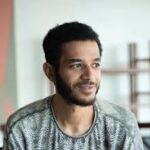
Photographer, video artist
Mohammad Alfaraj’s (b. 1993 in Al Hassa, KSA, where he lives and works), practice centers around his exploration of the relationship between forms and concepts, is visible through superimposed stories in his photographic collages, regrouping and contrasting fiction and non-fiction subjects. Alfaraj’s work also often uses natural materials found in his hometown and combines them with children games and stories from people working the land, as an attempt to create states of co-existence between man and nature with an undertone of hope. A socio-environment activist at heart, his short documentary Lost, 2015 (which was awarded first place in the student category at the Saudi Film Festival), captures the latent state of the notion of temporality for the stateless Arabs living as refugees in their place of birth, and the dehumanizing effect this plays. This “un-homely” context portrays the poisonous beauty of nature when lived as a nemesis under political paralysis.
Alfaraj g
Mohammad Alfaraj’s (b. 1993 in Al Hassa, KSA, where he lives and works), practice centers around his exploration of the relationship between forms and concepts, is visible through superimposed stories in his photographic collages, regrouping and contrasting fiction and non-fiction subjects. Alfaraj’s work also often uses natural materials found in his hometown and combines them with children games and stories from people working the land, as an attempt to create states of co-existence between man and nature with an undertone of hope. A socio-environment activist at heart, his short documentary Lost, 2015 (which was awarded first place in the student category at the Saudi Film Festival), captures the latent state of the notion of temporality for the stateless Arabs living as refugees in their place of birth, and the dehumanizing effect this plays. This “un-homely” context portrays the poisonous beauty of nature when lived as a nemesis under political paralysis.
Alfaraj graduated with a BA in mechanical engineering from KFUPM in 2017. His recent solo show; Still Life and Plastic Dreams, Athr Gallery, Jeddah KSA (2020), and group shows include I Love You Urgently, 21,39 SAC, Jeddah, KSA (2020), Durational Portrait; A brief overview of video art in Saudi Arabia, Athr Gallery, Jeddah, KSA (2020), Sharjah Islamic Festival, Sharjah, UAE (2019). His work has also been shown at the Sharjah Art Foundation; Le Murate Pac, Florence (2019); Athr Gallery, Jeddah (2018); 21,39 Jeddah Arts (2017, 2019); Saudi Film Festival, Dammam (2015) and Dubai International Film Festival (2014). Alfaraj worked as a programmer in both the Saudi Film Festival and the poetry house festival in Dammam.
This content is avaiable only in this archive.
Top exhibition of Middle East Now Festival 2019
Mohammad Alfaraj’s first solo exhibition, The Glass Between Us, is an experimentation on sound and image, viewing life through the lens of a child. His new body of work searches for the surprising and the unexpected in daily life, creating a huge mosaic formed by humans and their peers. Presenting works prepared in advance by the artist in Saudi Arabia, alongside new work made with children in Florence during a series of workshops, the exhibition presents a sensory and visual experience that may be simple in form, but depends on a fundamental and important subject around which it tried to create a dialogue.
Middle East Now, MAD Murate Art District and Crossway Foundation Residency in collaboration with PIA Palazzina Indiano Arte della Compagnia Virgilio Sieni.
Mohammad Alfaraj’s first solo exhibition, The Glass Between Us, is an experimentation on sound and image, viewing life through the lens of a child. His new body of work searches for the surprising and the unexpected in daily life, creating a huge mosaic formed by humans and their peers. Presenting works prepared in advance by the artist in Saudi Arabia, alongside new work made with children in Florence during a series of workshops, the exhibition presents a sensory and visual experience that may be simple in form, but depends on a fundamental and important subject around which it tried to create a dialogue.
Middle East Now, MAD Murate Art District and Crossway Foundation Residency in collaboration with PIA Palazzina Indiano Arte della Compagnia Virgilio Sieni.
This content is avaiable only in this archive.

Fotografo
Giuseppe Toscano è nato a Catania nel 1976. Formatosi presso la Fondazione Studio Marangoni di Firenze, dal 2003 lavora per la stessa scuola come insegnante di fotografia, organizzatore e coordinatore delle attività didattiche.
Giuseppe Toscano è nato a Catania nel 1976. Formatosi presso la Fondazione Studio Marangoni di Firenze, dal 2003 lavora per la stessa scuola come insegnante di fotografia, organizzatore e coordinatore delle attività didattiche.
This content is avaiable only in this archive.

Fotografo
Martino Marangoni si è formato presso il Pratt Institute di New York, dal 1977 al 1993 è stato docente di fotografia dello Studio Arts Center International di Firenze. Nel 1991 ha istituito la Fondazione Studio Marangoni: Iniziative di Fotografia Contemporanea, di cui è presidente. Da quella data, Marangoni affianca la sua ricerca personale alla promozione della cultura fotografica a livello internazionale attraverso attività didattiche ed espositive e l’assegnazione di premi.
Martino Marangoni si è formato presso il Pratt Institute di New York, dal 1977 al 1993 è stato docente di fotografia dello Studio Arts Center International di Firenze. Nel 1991 ha istituito la Fondazione Studio Marangoni: Iniziative di Fotografia Contemporanea, di cui è presidente. Da quella data, Marangoni affianca la sua ricerca personale alla promozione della cultura fotografica a livello internazionale attraverso attività didattiche ed espositive e l’assegnazione di premi.
This content is avaiable only in this archive.
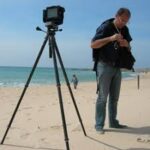
Fotografo
Davide Virdis, Sassari 1962, vive a Firenze. Si è laureato in architettura. Lavora professionalmente come fotografo di architettura e territorio, realizzando campagne di analisi ed interpretazione dello spazio e delle sue relazioni con le attività umane. Dal 1998 conduce, per conto dell’Amministrazione Provinciale di Sassari, una ricerca finalizzata alla creazione di un archivio fotografico sul paesaggio contemporaneo del nord Sardegna.
Davide Virdis, Sassari 1962, vive a Firenze. Si è laureato in architettura. Lavora professionalmente come fotografo di architettura e territorio, realizzando campagne di analisi ed interpretazione dello spazio e delle sue relazioni con le attività umane. Dal 1998 conduce, per conto dell’Amministrazione Provinciale di Sassari, una ricerca finalizzata alla creazione di un archivio fotografico sul paesaggio contemporaneo del nord Sardegna.
This content is avaiable only in this archive.
Progetto RIVA
Nell’autunno 2017 i fotografi Davide Virdis, Martino Marangoni e Giuseppe Toscano hanno elaborato un progetto originale per San Francesco, Comune di Pelago, e per Pontassieve. Il tema principale di questo lavoro era il rapporto tra il fiume Sieve e la comunità. Questo gruppo di ricerca ha prodotto un lavoro originale sul territorio tra Pelago e Pontassieve presentato durante la festa del patrono a Pelago-Pontassieve il 29 settembre 2018, in una esposizione pubblica delle fotografie prodotte. L’esposizione nello spazio pubblico, sui pannelli di affissione che permeano la dimensione urbana, viene proposta dunque in una dimensione di immediata e spontanea accessibilità. I tre autori hanno inoltre condotto un workshop sul campo con quattro giovani fotografe.
Nell’autunno 2017 i fotografi Davide Virdis, Martino Marangoni e Giuseppe Toscano hanno elaborato un progetto originale per San Francesco, Comune di Pelago, e per Pontassieve. Il tema principale di questo lavoro era il rapporto tra il fiume Sieve e la comunità. Questo gruppo di ricerca ha prodotto un lavoro originale sul territorio tra Pelago e Pontassieve presentato durante la festa del patrono a Pelago-Pontassieve il 29 settembre 2018, in una esposizione pubblica delle fotografie prodotte. L’esposizione nello spazio pubblico, sui pannelli di affissione che permeano la dimensione urbana, viene proposta dunque in una dimensione di immediata e spontanea accessibilità. I tre autori hanno inoltre condotto un workshop sul campo con quattro giovani fotografe.
This content is avaiable only in this archive.
Progetto RIVA
Nel 2018 i fotografi Paolo Woods ed Edoardo Delille sono stati inviati a partecipare al Progetto RIVA con un workshop dedicato a giovani fotografi sul rapporto fiume e comunità, incentrato sul territorio di Pelago e Pontassieve, a cui hanno dedicato poi anche una produzione artistica inedita, che verrà esposta in occasione della grande mostra dedicata alla triennale del Progetto RIVA.
Nel 2018 i fotografi Paolo Woods ed Edoardo Delille sono stati inviati a partecipare al Progetto RIVA con un workshop dedicato a giovani fotografi sul rapporto fiume e comunità, incentrato sul territorio di Pelago e Pontassieve, a cui hanno dedicato poi anche una produzione artistica inedita, che verrà esposta in occasione della grande mostra dedicata alla triennale del Progetto RIVA.
This content is avaiable only in this archive.
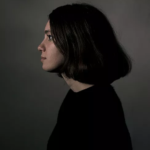
Fotografa
Alisa Martynova (Orenburg, 1994) Nel 2019 si diploma nel programma triennale di fotografia professionale presso la Fondazione Studio Marangoni a Firenze. Durante i suoi studi è stata assistente per il collettivo fotografico Riverboom. Nel 2018 presenta il suo lavoro a Leica Story, nel 2019 vince la categoria fotografia del Premio Combat Prize, è seconda classificata del Premio Canon Giovani Fotografi, proietta il suo lavoro alla serata di apertura di Les Rencontres d’Arles e viene selezionata tra i finalisti del Photolux Award 2019 e del 2021 Photo Contest, categoria Portraits, di World Press Photo. È membro dell’agenzia fotografica Parallelo Zero.
Alisa Martynova (Orenburg, 1994) Nel 2019 si diploma nel programma triennale di fotografia professionale presso la Fondazione Studio Marangoni a Firenze. Durante i suoi studi è stata assistente per il collettivo fotografico Riverboom. Nel 2018 presenta il suo lavoro a Leica Story, nel 2019 vince la categoria fotografia del Premio Combat Prize, è seconda classificata del Premio Canon Giovani Fotografi, proietta il suo lavoro alla serata di apertura di Les Rencontres d’Arles e viene selezionata tra i finalisti del Photolux Award 2019 e del 2021 Photo Contest, categoria Portraits, di World Press Photo. È membro dell’agenzia fotografica Parallelo Zero.
Ciclo Global Identities
Arnas Anskaitis, Ignas Krunglevičius, Andrej Polukord, Ieva Rojūtė curated by Matteo Innocenti in collaboration with Adrius Pocius, Alesia and Yuliya Savitskaya As Second episode of The GLOBAL IDENTITIES cicle, A certain identity is a project that brings together artists of different nationalities to express themselves about identity issues. The first exhibition of the project, presents the young Lithuanian artists Arnas Anskaitis, Ignas Krunglevičius, Andrej Polukord, Ieva Rojūtė. The certain , as an integral part of the title, in Italian “certa”, takes on a double meaning: as an adjective it is synonymous with certainty, the identity which we can undoubtedly recognize, as an alternative it is also an indefinite adjective, without quality or quantity, indicating an identity that is possible among many others. Four artists of a particular nationality are chosen by the curator of the project in collaboration with the museums or the Fine Arts Academy of the respective c
Arnas Anskaitis, Ignas Krunglevičius, Andrej Polukord, Ieva Rojūtė curated by Matteo Innocenti in collaboration with Adrius Pocius, Alesia and Yuliya Savitskaya As Second episode of The GLOBAL IDENTITIES cicle, A certain identity is a project that brings together artists of different nationalities to express themselves about identity issues. The first exhibition of the project, presents the young Lithuanian artists Arnas Anskaitis, Ignas Krunglevičius, Andrej Polukord, Ieva Rojūtė. The certain , as an integral part of the title, in Italian “certa”, takes on a double meaning: as an adjective it is synonymous with certainty, the identity which we can undoubtedly recognize, as an alternative it is also an indefinite adjective, without quality or quantity, indicating an identity that is possible among many others. Four artists of a particular nationality are chosen by the curator of the project in collaboration with the museums or the Fine Arts Academy of the respective countries to “represent”, according to the particular inclination of their research and culture of origin, the factor of identity through such exhibition. The history and geographic location of Lithuania makes it significant both for the question of identity and for that of the borders and relations within the continent. Since the Republic of Lithuania, like the other Baltic countries, has built itself in a dual movement of independence and annexation, between Russia and Europe – where is been a member since 2004 -. 2018 also marks the centenary of the nation’s independence, which took place in February 1918 and The constitution of the Republic. Vernissage e artists talk: 5 aprile ore 17.30. With the collaboration of Le Murate. Progetti Arte Contemporanea – Mus.e and with TUM associazione culturale (Italia/Italy), Fondazione per lo sviluppo della cultura dell’istruzione della persona (Bielorussia/Belarus), Vilnius Pataphysic Institute (Lituania/Lithuania). Con il patrocinio dell’Ambasciata della Repubblica di Lituana nella Repubblica Italiana e del Consolato della Repubblica Lituana di Firenze.
This content is avaiable only in this archive.
Fotografa
Fotografa Freelance Laureata in Fotografia presso l'Accademia di Belle Arti di Bologna 110/110 e Lode
Corsi e formazione
Miglianti Studio (GR)
Istituto Marangoni di Firenze
Accademia di Belle Arti di Bologna
UPV Universidad Politecnica Valencia
Cristina Nuñez studio
MAXXI Museo Nazionale delle Arti del XXI sec., Roma
Principali Esperienze Lavorative:
L’Immagine Ritrovata, Cineteca di Bologna, restauro filmico digitale, Bologna;
Galleria Continua, desk, accoglienza visitatori, allestimento, San Gimignano (SI);
Photolux Festival, Biennale Internazionale di Fotografia, Lucca;
Grofest, festival della fotografia, Grosseto;
The Self Portrait Experience, Cristina Nuñez studio, Chiasso, Svizzera Italiana;
Workshops
Antoine D’Agata
Moira Ricci
Cristina Nuñez
Joan Fontcuberta e Cristina De Middel
Luca Andreoni
Fotografa Freelance Laureata in Fotografia presso l'Accademia di Belle Arti di Bologna 110/110 e Lode
Corsi e formazione
Miglianti Studio (GR)
Istituto Marangoni di Firenze
Accademia di Belle Arti di Bologna
UPV Universidad Politecnica Valencia
Cristina Nuñez studio
MAXXI Museo Nazionale delle Arti del XXI sec., Roma
Principali Esperienze Lavorative:
L’Immagine Ritrovata, Cineteca di Bologna, restauro filmico digitale, Bologna;
Galleria Continua, desk, accoglienza visitatori, allestimento, San Gimignano (SI);
Photolux Festival, Biennale Internazionale di Fotografia, Lucca;
Grofest, festival della fotografia, Grosseto;
The Self Portrait Experience, Cristina Nuñez studio, Chiasso, Svizzera Italiana;
Workshops
Antoine D’Agata
Moira Ricci
Cristina Nuñez
Joan Fontcuberta e Cristina De Middel
Luca Andreoni
This content is avaiable only in this archive.

Collettivo artistico
Collettivo artistico, fondato nel 2011 da Giorgio Barrera, Andrea Botto e Marco Citron, lavora sull’immagine e sul costume dell’Italia oggi attraverso una nuova forma di racconto che attinge all’immaginariocollettivo, attivandolo e dotandolo di nuovi significati. Un ‘minestrone’ caustico e ironico di immagini e parole, che, partendo dal reale, produce libere narrazioni, incrociando politica, gossip e fatti di cronaca arrivando a nuovi contenuti, secondo criteri ispirati a quello che è stato definito ‘neorealitysmo’
Collettivo artistico, fondato nel 2011 da Giorgio Barrera, Andrea Botto e Marco Citron, lavora sull’immagine e sul costume dell’Italia oggi attraverso una nuova forma di racconto che attinge all’immaginariocollettivo, attivandolo e dotandolo di nuovi significati. Un ‘minestrone’ caustico e ironico di immagini e parole, che, partendo dal reale, produce libere narrazioni, incrociando politica, gossip e fatti di cronaca arrivando a nuovi contenuti, secondo criteri ispirati a quello che è stato definito ‘neorealitysmo’
This content is avaiable only in this archive.
Progetto RIVA
Durante i giorni dell’alluvione del ’66, per la prima volta a Firenze si mise in moto spontaneamente un’enorme catena di solidarietà. Ad accorrere furono giovani provenienti da ogni parte del mondo per salvare l’arte italiana: per tutti loro fu coniato il termine ‘angeli del fango’. Fotoromanzo Italiano lavora assemblando e contaminando immagini e materiali vari; per MAD Murate Art District gli artisti hanno costituito un gruppo di lavoro che ha coinvolto studenti o giovani artisti under 35 attivi sul territorio toscano in un workshop di ricerca attorno all’Arno. I partecipanti hanno lavorato come una vera e propria redazione procedendo prima alla stesura e poi alla realizzazione di un fotoromanzo sul fiume.
Durante i giorni dell’alluvione del ’66, per la prima volta a Firenze si mise in moto spontaneamente un’enorme catena di solidarietà. Ad accorrere furono giovani provenienti da ogni parte del mondo per salvare l’arte italiana: per tutti loro fu coniato il termine ‘angeli del fango’. Fotoromanzo Italiano lavora assemblando e contaminando immagini e materiali vari; per MAD Murate Art District gli artisti hanno costituito un gruppo di lavoro che ha coinvolto studenti o giovani artisti under 35 attivi sul territorio toscano in un workshop di ricerca attorno all’Arno. I partecipanti hanno lavorato come una vera e propria redazione procedendo prima alla stesura e poi alla realizzazione di un fotoromanzo sul fiume.
This content is avaiable only in this archive.

Fotografo
Arno Rafael Minkkinen è un fotografo finlandese-americano. Dopo la laurea presso il Wagner College con un BA in letteratura inglese, ricopre l’incarico di copywriting in Madison Avenue. Tra i suoi scritti “Cosa succede dentro la tua mente può accadere all’interno di una macchina fotografica” (per le fotocamere Minolta) e “Jingle Bells” (per J & B Scotch). Dopo questa esperienza la sua attenzione si rivolge in maniera esclusiva alla fotografia. In un workshop con John Benson a Apeiron, Millerton, New York, nel settembre 1971 produce una serie di autoritratti nudi ispirati in parte dal lavoro della compianta Diane Arbus. Pochi anni dopo, studiando con Harry Callahan e Aaron Siskind alla Rhode Island School of Design, consegue l’MFA in fotografia. Nel corso del decennio successivo, intraprende la carriera di insegnante/curatore e di direttore creativo/copywriter. Minkkinen continua nel corso della sua vita a dedicare le sue energie e la ricerca fotografica all’autori
Arno Rafael Minkkinen è un fotografo finlandese-americano. Dopo la laurea presso il Wagner College con un BA in letteratura inglese, ricopre l’incarico di copywriting in Madison Avenue. Tra i suoi scritti “Cosa succede dentro la tua mente può accadere all’interno di una macchina fotografica” (per le fotocamere Minolta) e “Jingle Bells” (per J & B Scotch). Dopo questa esperienza la sua attenzione si rivolge in maniera esclusiva alla fotografia. In un workshop con John Benson a Apeiron, Millerton, New York, nel settembre 1971 produce una serie di autoritratti nudi ispirati in parte dal lavoro della compianta Diane Arbus. Pochi anni dopo, studiando con Harry Callahan e Aaron Siskind alla Rhode Island School of Design, consegue l’MFA in fotografia. Nel corso del decennio successivo, intraprende la carriera di insegnante/curatore e di direttore creativo/copywriter. Minkkinen continua nel corso della sua vita a dedicare le sue energie e la ricerca fotografica all’autoritratto: nello specifico la sua attenzione si rivolge alle immagini non manipolate della figura umana nuda nel paesaggio naturale. Attualmente è docente di Arte presso l’Università del Massachusetts Lowell; ricopre inoltre un incarico come docente presso l’Università di Arte e design di Helsinki e alla facoltà del Maine Media College in Rockport, Maine. Ha pubblicato ed esposto in tutto il mondo, i suoi lavori sono presenti nelle collezioni del Museum of Modern Art di New York, nel Museum of Fine Arts di Boston, presso l’Addison Gallery of American Art di Andover, nel Musée d’Art Moderne de la Ville di Parigi e Centre Georges Pompidou di Parigi, presso il Musée de l’Elysée di Losanna, nel Center for creative Fotografia in Tucson, al Tokyo Metropolitan Museum of photography in Giappone e in molti altri musei di calibro internazionale. Arno Rafael Minkkinen è stato insignito nel 1992 della medaglia di prima classe all’Ordine del Leone da parte del Governo Finlandese, e del Premio Finnish State Art in Fotografia nel 2006. Attualmente è membro del Consiglio Nazionale della Society for Photographic Education.
This content is avaiable only in this archive.
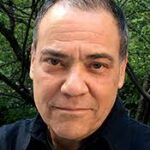
Fotografo
Jay Wolke vive e lavora a Chicago, Illinois. Personali a lui dedicate sono state organizzate presso l’Art Institute di Chicago, il St. Louis Art Museum, Harvard University, la California Museum of Photography, e la Galleria Primo Piano di Napoli. Tra le varie collezioni permanenti che espongono sue fotografie vi sono il Museum of Modern Art, New York, il Whitney Museum of American Art, New York, l’Art Institute of Chicago e il Museo di San Francisco di arte moderna. Dal 1981 è docente di fotografia e arte in varie università. Dal 1992-1999 è stato Coordinatore della laurea in Documentary Photography presso l’Istituto di Design (IIT). Nel 1999-2000 è stato responsabile della “Art and Graduate Studies” presso Studio Art Centers International di Firenze. Attualmente è docente di Fotografia presso la Columbia College di Chicago, ha ricoperto anche la carica di presidente del dipartimento di Arte e Design anche nei periodi 2000-2005 e 2008-2014. Wolke ha ricevuto borse di stu
Jay Wolke vive e lavora a Chicago, Illinois. Personali a lui dedicate sono state organizzate presso l’Art Institute di Chicago, il St. Louis Art Museum, Harvard University, la California Museum of Photography, e la Galleria Primo Piano di Napoli. Tra le varie collezioni permanenti che espongono sue fotografie vi sono il Museum of Modern Art, New York, il Whitney Museum of American Art, New York, l’Art Institute of Chicago e il Museo di San Francisco di arte moderna. Dal 1981 è docente di fotografia e arte in varie università. Dal 1992-1999 è stato Coordinatore della laurea in Documentary Photography presso l’Istituto di Design (IIT). Nel 1999-2000 è stato responsabile della “Art and Graduate Studies” presso Studio Art Centers International di Firenze. Attualmente è docente di Fotografia presso la Columbia College di Chicago, ha ricoperto anche la carica di presidente del dipartimento di Arte e Design anche nei periodi 2000-2005 e 2008-2014. Wolke ha ricevuto borse di studio e premi dalla National Endowment for the Arts, l’Arts Council Illinois, Focus Infinity Fund and the Ruttenberg Arts Foundation. Wolke ha conseguito il suo B.F.A. in Printmaking / Illustrazione presso la Washington University, St. Louis, e un M.S. in Fotografia presso l’Istituto di Design, Illinois Institute of Technology, Chicago. Ha pubblicato alcune monografie come “All Around the House: Photographs of American- Jewish Communal Life” (Art Institute of Chicago, 1998), “Along the Divide: Photographs of the Dan Ryan Expressway” (Center for American Places, 2004) e “Architecture of Resignation: Photographs from the Mezzogiorno” (Center for American Places, 2011). Le sue fotografie sono apparse in numerose pubblicazioni tra cui il New York Times Magazine, Doubletake, Architectural Record, Newsweek, Fortune, e il Village Voice.
This content is avaiable only in this archive.
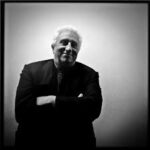
Fotografo
Nato a Como, Massimo Vitali si trasferisce a Londra dopo il liceo, dove studia fotografia alla London College of Printing. Nei primi anni Sessanta lavora come fotoreporter, collaborando con molte riviste e agenzie in Italia e in Europa. In questo periodo di intenso lavoro incontra Simon Guttmann, fondatore dell’agenzia Report, fondamentale per la sua crescita come “Concerned Photographer”. All’inizio degli anni Ottanta una crescente sfiducia nella convinzione che “la fotografia abbia avuto una capacità assoluta di riprodurre le sfumature della realtà” porta Vitali a intraprendere un cambiamento nella sua carriera. Lavora come direttore della fotografia per la televisione e il cinema, tuttavia, il suo legame con la fotocamera rimane e la fotografia diviene per lui mezzo di ricerca artistica. La sua serie di panorami balneari italiani è iniziata alla luce dei radicali cambiamenti politici in Italia. Vitali osserva con attenzione le realtà italiane dipingendo una “vision
Nato a Como, Massimo Vitali si trasferisce a Londra dopo il liceo, dove studia fotografia alla London College of Printing. Nei primi anni Sessanta lavora come fotoreporter, collaborando con molte riviste e agenzie in Italia e in Europa. In questo periodo di intenso lavoro incontra Simon Guttmann, fondatore dell’agenzia Report, fondamentale per la sua crescita come “Concerned Photographer”. All’inizio degli anni Ottanta una crescente sfiducia nella convinzione che “la fotografia abbia avuto una capacità assoluta di riprodurre le sfumature della realtà” porta Vitali a intraprendere un cambiamento nella sua carriera. Lavora come direttore della fotografia per la televisione e il cinema, tuttavia, il suo legame con la fotocamera rimane e la fotografia diviene per lui mezzo di ricerca artistica. La sua serie di panorami balneari italiani è iniziata alla luce dei radicali cambiamenti politici in Italia. Vitali osserva con attenzione le realtà italiane dipingendo una “visione clinica e compiacente di normalità italiane”. Nel corso degli ultimi 12 anni sviluppa un nuovo approccio per ritrarre il mondo, “illuminando l’apoteosi della Mandria”, esprimendo e commentando attraverso le più intriganti, forme palpabili di arte contemporanea.
This content is avaiable only in this archive.
Progetto RIVA
Mostra fotografica di Massimo Vitali, Arno Rafael Minkkinen e Jay Wolke A cura di Fondazione Studio Marangoni
Arno immaginario Collettivo si è configurato come un triplice lavoro fotografico sull’Arno che da settembre a novembre 2016 ha coinvolto fotografi locali, fotografi internazionali e giovani fotografi. Il progetto si sviluppa sul rapporto tra Firenze e il suo elemento naturale più importante, il fiume, e restituisce una ricostruzione collettiva dell’immaginario intorno ad esso, attraverso tre momenti espositivi distinti. La mostra conclusiva ha visto la partecipazione di tre grandi fotografi internazionali. Arno Minkkinen, Massimo Vitali e Jay Wolke hanno interpretato la città di Firenze attraverso la sua spina dorsale, l’Arno, e hanno prodotto una serie di lavori inediti. Focus della ricerca di Arno Minkkinen è il paesaggio antropomorfizzato e il rapporto tra la figura umana e l’elemento dell’acqua. Un sistema combinatorio che tiene insieme a livello visivo le div
Mostra fotografica di Massimo Vitali, Arno Rafael Minkkinen e Jay Wolke A cura di Fondazione Studio Marangoni
Arno immaginario Collettivo si è configurato come un triplice lavoro fotografico sull’Arno che da settembre a novembre 2016 ha coinvolto fotografi locali, fotografi internazionali e giovani fotografi. Il progetto si sviluppa sul rapporto tra Firenze e il suo elemento naturale più importante, il fiume, e restituisce una ricostruzione collettiva dell’immaginario intorno ad esso, attraverso tre momenti espositivi distinti. La mostra conclusiva ha visto la partecipazione di tre grandi fotografi internazionali. Arno Minkkinen, Massimo Vitali e Jay Wolke hanno interpretato la città di Firenze attraverso la sua spina dorsale, l’Arno, e hanno prodotto una serie di lavori inediti. Focus della ricerca di Arno Minkkinen è il paesaggio antropomorfizzato e il rapporto tra la figura umana e l’elemento dell’acqua. Un sistema combinatorio che tiene insieme a livello visivo le diverse anime del fiume è, invece, al centro della produzione di Jay Wolke, mentre Massimo Vitali guarda alla relazione tra i cittadini e il fiume come momento aggregazione.
This content is avaiable only in this archive.